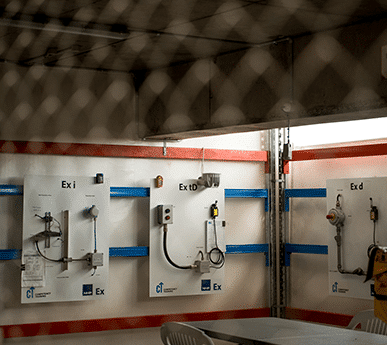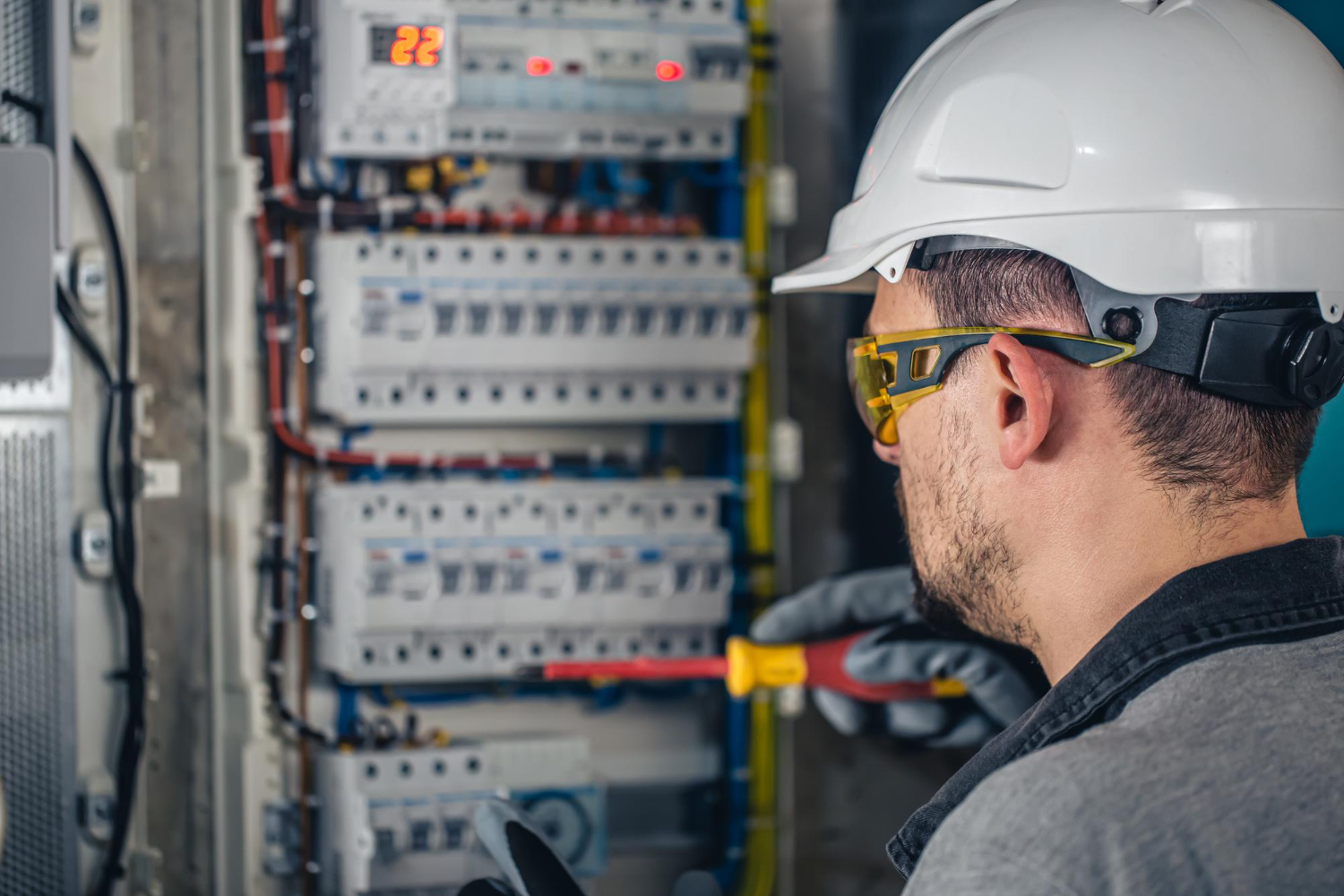The Basic Principles Of Roar Solutions
The Basic Principles Of Roar Solutions
Blog Article
What Does Roar Solutions Mean?
Table of ContentsThe Best Guide To Roar SolutionsSee This Report on Roar SolutionsRoar Solutions for Beginners
In such an environment a fire or surge is possible when three fundamental problems are fulfilled. This is typically referred to as the "dangerous area" or "burning" triangle. In order to safeguard installations from a potential surge a method of evaluating and identifying a possibly unsafe location is called for. The objective of this is to guarantee the appropriate choice and setup of equipment to ultimately protect against an explosion and to guarantee safety of life.
(https://roarsolutions.blog.ss-blog.jp/2024-12-02?1733139874)
No tools ought to be installed where the surface area temperature level of the devices is greater than the ignition temperature level of the offered threat. Below are some usual dust unsafe and their minimal ignition temperature. Coal Dirt 380C 225C Polythene 420C (melts) Methyl Cellulose 420C 320C Starch 460C 435C Flour 490C 340C Sugar 490C 460C Grain Dirt 510C 300C Phenolic Resin 530C > 450C Aluminium 590C > 450C PVC 700C > 450C Soot 810C 570C The probability of the risk existing in a focus high sufficient to cause an ignition will differ from location to area.
In order to categorize this danger an installment is split into locations of danger depending upon the quantity of time the dangerous exists. These locations are described as Zones. For gases and vapours and dirts and fibres there are 3 zones. Area 0 Zone 20 A hazardous atmosphere is highly most likely to be existing and may exist for long periods of time (> 1000 hours annually) and even continuously Area 1 Area 21 A dangerous ambience is possible but unlikely to be existing for lengthy periods of time (> 10 450 C [842 F] A category of T6 indicates the minimum ignition temperature is > 85 C [185 F] Unsafe area electrical tools maybe created for usage in greater ambient temperature levels. This would certainly showed on the score plate e.g. EExe II C T3 Ta + 60C( This indicates at 60C ambient T3 will not be gone beyond) T1 T1, T2, T3, T4, T5, T6 T2 T2, T3, T4, T5, T6 T3 T3, T4, T5, T6 T4 T4, T5, T6 T5 T5, T6 T6 T6 A T Class score of T1 implies the optimum surface temperature level created by the instrument at 40 C is 450 C. Assuming the connected T Class and Temperature score for the equipment are appropriate for the area, you can constantly use an instrument with an extra stringent Department score than needed for the area. There isn't a clear solution to this question. It really does rely on the kind of tools and what fixings require to be lugged out. Tools with specific test procedures that can't be performed in the field in order to achieve/maintain 3rd party ranking. Have to come back to the factory if it is prior to the devices's service. Field Repair By Authorised Personnel: Challenging screening might not be called for however particular procedures may need to be followed in order for the equipment to maintain its 3rd event score. Authorized employees need to be utilized to execute the job properly Repair work must be a like for like replacement. New component need to be taken into consideration as a direct replacement requiring no unique screening of the devices after the repair work is complete. Each piece of equipment with a hazardous score must be examined independently. These are laid out at a high level below, however, for even more in-depth info, please refer directly to the standards.
The Ultimate Guide To Roar Solutions
The devices register is a comprehensive data source of equipment records that consists of a minimum collection of fields to identify each item's place, technical criteria, Ex lover category, age, and ecological data. This details is crucial for tracking and managing the devices effectively within dangerous locations. On the other hand, for periodic or RBI tasting evaluations, the quality will certainly be a mix of Detailed and Close evaluations. The proportion of Detailed to Shut assessments will certainly be figured out by the Devices Danger, which is analyzed based on ignition danger (the likelihood of a source of ignition versus the possibility of a flammable atmosphere )and the hazardous area classification
( Area 0, 1, or 2). This variant will certainly also affect the resourcing needs for work prep work. As soon as Lots are defined, you can develop sampling strategies based upon the example dimension of each Whole lot, which refers to the number of arbitrary tools things to be inspected. To determine the needed sample size, two facets require to be examined: the dimension of the Lot and the category of inspection, which shows the degree of effort that should be used( decreased, normal, or enhanced )to the evaluation of the Great deal. By incorporating the group of examination with the Whole lot dimension, you can then establish the suitable rejection requirements for an example, suggesting the allowed variety of faulty things found within that sample. For more details on this procedure, please refer to the Energy Institute Guidelines. The IEC 60079 standard advises that the optimum period between assessments need to not go beyond 3 years. EEHA assessments will additionally be conducted outside of RBI projects as part of arranged maintenance and devices overhauls or repair work. These inspections can be attributed towards the RBI sample sizes within the affected Lots. EEHA assessments are carried out to determine faults in electrical equipment. A weighted scoring system is crucial, as a solitary tool may have several faults, each with varying degrees of ignition threat. If the consolidated rating of both assessments is less than twice the mistake score, the Lot is considered acceptable. If the Great deal is still taken into consideration inappropriate, it needs to undergo a complete evaluation or justification, which may trigger stricter examination methods. Accepted Whole lot: The reasons for any faults are determined. If an usual failing setting is found, extra devices may need maintenance. Faults are identified by severity( Safety and security, Integrity, House cleaning ), guaranteeing that urgent problems are analyzed and resolved immediately to alleviate any type of influence on safety and security or operations. The EEHA database need to track and videotape the lifecycle of mistakes together with the rehabilitative actions taken. Carrying out a robust Risk-Based Assessment( RBI )approach is crucial for ensuring conformity and security in handling Electric Equipment in Hazardous Locations( EEHA) (eeha courses). Automated Fault Scoring and Lifecycle Management: Effortlessly manage mistakes and track their lifecycle to improve assessment accuracy. The intro of this support for risk-based evaluation better strengthens Inspectivity's setting as a best-in-class option for governing compliance, along with for any asset-centric inspection usage case. If you want finding out more, we invite you to ask for a presentation and uncover exactly how our remedy can change your EEHA administration processes.
Fascination About Roar Solutions

In terms of eruptive threat, a harmful area is a setting in which an explosive atmosphere is present (or might be expected to be existing) in amounts that call for special preventative measures for the building and construction, setup and usage of equipment. hazardous area electrical course. In this short article we explore the difficulties dealt with in the office, the risk control actions, and the called for competencies to work securely
These substances can, in certain problems, create explosive atmospheres and these can have significant and heartbreaking consequences. Most of us are acquainted with the fire triangular eliminate any kind of one of the 3 aspects and the fire can not occur, yet what does this mean in the context of unsafe areas?
In many circumstances, we can do little regarding the levels of oxygen airborne, however we can have significant impact on resources of ignition, as an example electric devices. Unsafe locations are documented on the harmful area classification illustration and are identified on-site by the triangular "EX" sign. Right here, amongst various other key information, zones are split into three types relying on the risk, the possibility Home Page and duration that an explosive atmosphere will exist; Area 0 or 20 is deemed one of the most hazardous and Zone 2 or 22 is deemed the least.
Report this page